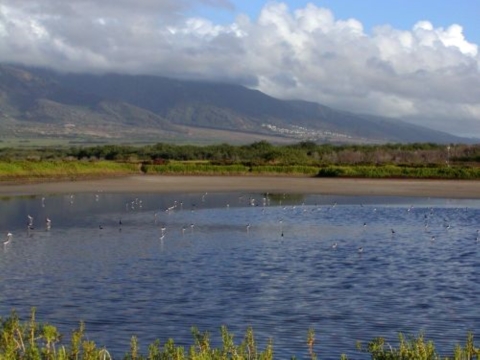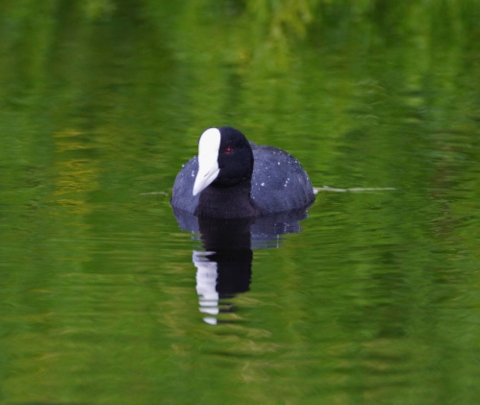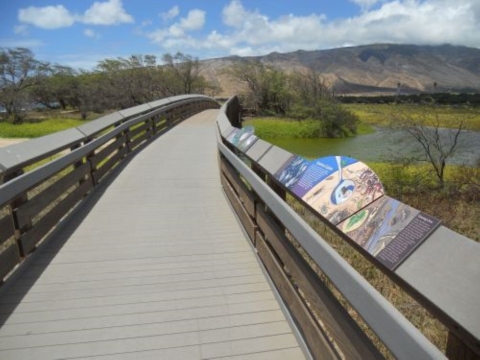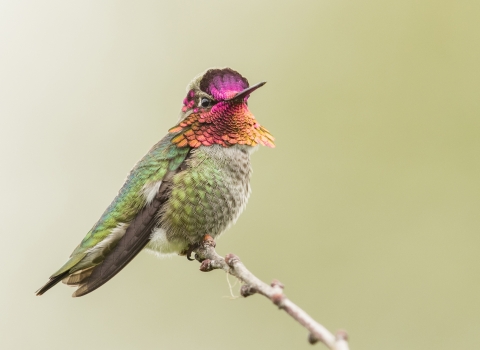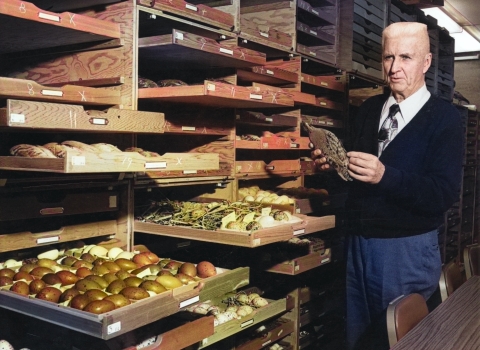This year is the 50th anniversary of the Endangered Species Act, a law that has been a powerful catalyst for conservation of America’s most treasured fish, wildlife, plants and their habitats. In the Pacific Region, our Tribes, state and federal agencies, and partners have joined with our dedicated staff to be the driving force behind the successes we share and the strength ensuring we can address the challenges ahead. Celebrate this milestone with us in this collection of stories as we reflect on past successes, assess current challenges, and envision an equally bright future for the next 50 years and beyond.
The U.S. Fish and Wildlife Service, through its Cooperative Recovery Initiative, is committing $3.74 million to nine projects on 12 national wildlife refuge national wildlife refuge
A national wildlife refuge is typically a contiguous area of land and water managed by the U.S. Fish and Wildlife Service for the conservation and, where appropriate, restoration of fish, wildlife and plant resources and their habitats for the benefit of present and future generations of Americans.
Learn more about national wildlife refuge across 12 states for recovery of some of the nation’s most at-risk species on or near national wildlife refuges.
“We are targeting our work where it will do the most good for America’s resources,” said U.S. Fish and Wildlife Service acting director Jim Kurth. “This initiative is a unique way to engage in conservation work with states and partners, giving the taxpayer a good return on investment.”
At Keālia Pond National Wildlife Refuge, the Service is investing in a two year project to protect Hawaiian waterbirds and their core wetland habitats. The approximately 700 acres of wetlands protected by the refuge are essential habitat for native Hawaiian species, especially for the endangered Hawaiian coot, ‘alae ke‘oke‘o, (Fulica alai) and endangered Hawaiian stilt, ae‘o, (Himantopus mexicanus knudseni).
“Actions to benefit recovery of endangered birds, including the ‘alae ke‘oke‘o and ae‘o are a priority,” said Kristi Young, deputy field supervisor for the Pacific Islands Fish and Wildlife Office. “National wildlife refuges play a critical role in the recovery of these species – providing safe places for the species and quality habitat.”
As the management tools and conservation measures significantly improve habitats for endangered species, the greater the possibility of species survival and recovery. The service closely monitors the effects of conservation actions and the impacts leading to the recovery of endangered species.
Invasive species like cats, rats, and pigs and habitat loss have hindered the recovery progress of these species. The project team will establish long-lasting protections against predators and ungulates, and create new habitat, resulting in a large-scale restoration of the refuge, a critically important wetland habitat in Hawaiʻi. These efforts will also reduce predator pressure and enhance habitat at the refuge to further benefit waterbird species. Additional native species that will benefit from the project are endangered Hawaiian goose or nēnē and endangered Hawaiian duck or koloa.
“This project includes a new predator-proof fence around 400 acres of the refuge, in addition to the habitat restoration that will take place,” said Oʻahu National Wildlife Refuge Complex project leader Joe Schwagerl. “Improving habitat quality and protecting native birds from invasive predators will increase nesting success for the threatened ‘alae ke‘oke‘o and endangered ae‘o, in addition to benefiting the many other native and migratory species that depend on the refuge.”
Established in 1992, Keālia Pond National Wildlife Refuge encompasses approximately 700 acres and is one of the few natural wetlands remaining in the Hawaiian Islands. Located along the south-central coast of the island of Maui, between the towns of Kīhei and Mā‘alaea, it is a natural basin for a 56-square mile watershed from the West Maui Mountains.
The Keālia Coastal Boardwalk is a beautiful tranquil walkway and bird sanctuary, beside Maalaea Bay on the south edge of Maui’s central valley. A walk on the boardwalk takes you through ancient wetlands where you can watch two of Hawaii’s native and endangered waterbirds - the Hawaiian coot and Hawaiian stilt. Across the highway you can see Keālia Pond where waterfowl from Asia and North America come for rest and warmer climate, including northern shoveler and northern pintail. The Pacific golden plover migrates from Alaska, and other birds that come for the winter include the wandering tattler and ruddy turnstone.
The Cooperative Recovery Initiative was established in 2013 to restore and recover federally listed species on national wildlife refuges and surrounding lands. It funds on-the-ground conservation projects that provide high conservation benefits. These projects often provide related conservation benefits to other imperiled species and encourage partnerships with states and private groups.
###
The U.S. Fish and Wildlife Service works with others to conserve, protect, and enhance fish, wildlife, plants, and their habitats for the continuing benefit of the American people. For more information, visit www.fws.gov/pacificislands, or connect with us through any of these social media channels at https://www.facebook.com/PacificIslandsFWS, www.flickr.com/photos/usfwspacific/, https://medium.com/usfwspacificislands or www.twitter.com/USFWSPacific.

